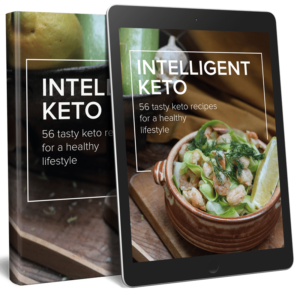Wellbeing
13 Cheap and Healthy Grocery Shopping Tips
Inflation is the talk of the town. The prices of almost everything we need to survive and live comfortably – food, water, rent, fuel, utilities – are skyrocketing through the roof. It’s going to be a wild ride over the next few months (heaven forbid, maybe even years!), and it’s best to start tightening our belts now. Cutting back won’t be easy, that’s for sure. So, we’ve prepared this practical list of cheap and healthy grocery shopping tips to help everybody out! Let’s begin!
1) Prepare a grocery list
A well-thought-out grocery list is absolutely essential when you’re on a budget. Think of it as your own version of horse blinders, keeping you on track and shielding you from the colorful temptations on the aisles!
Take inventory of what you already have at home. And then write down what’s lacking and what you’re about to run out of.
If possible, categorize your list. For instance, make columns for dry goods, fresh produce, canned goods, dairy, baking ingredients, etc. Doing so will allow you to be more efficient during your grocery trip.
Another thing to note is that a well-balanced diet should always be a priority, even during these economically trying times. Ensure you and your family get the right balance of both macro and micronutrients.
Here’s a quick guide from our blog post, “Is Eating Healthy Expensive?”:
| Protein | Seafood, meat, poultry, eggs, nuts, seeds, dairy products |
| Carbohydrates | Whole grains, whole wheat, potatoes, legumes, corn, beans, fiber-rich fruits, starchy veggies |
| Fats | Fatty fish, eggs, nuts, seeds, avocados, olive oil, peanut oil, cheese, dairy |
| Minerals | Nuts, seeds, organ meats, eggs, beans, shellfish, veggies |
| Vitamins | Liver, eggs, seafood, dairy, seeds, poultry, meat, fruits, vegetables |
Getting nutrients from food should always be the first option. But a high-quality multivitamin is a good backup, too. A perfect example would be our Intelligent Labs Adult Multivitamin. Every tablet contains 25 essential vitamins and minerals in their most absorbable and body-ready forms to help fill nutritional gaps in your diet.
2) Research recipes in advance
A fair bit of work will be involved here. And yes, this also means cooking will need to be done at home. Fortunately, you won’t be cooking for Gordon Ramsay, so there’s no need to get fancy.

Knowing what you’re going to cook ahead of time has a few benefits:
- You can prepare dishes with shared ingredients
- You can estimate the total cost for these dishes
- There will be little to no waste because you’ll be using everything on the list!
- If you’re tracking your macro and micronutrients, you can see how much you’re consuming on a daily basis
There are plenty of recipes on the web. But if you’re trying to cut down on sugar and carbs, check out Intelligent Keto. This keto cookbook includes 56 mouthwatering recipes your whole family will enjoy – from breakfast, lunch, dinner, desserts, and even sauces!
3) Prepare meals in advance
If you follow our healthy grocery shopping tip #2, then this tip will be much easier to carry out since they’re closely related.
You can prepare your meals for a certain number of days. For instance, if you do your grocery shopping on Saturday, you can meal prep on Sunday for your meals on Monday, Tuesday, and Wednesday. Or do the entire week if you want.
A meal planning calendar can help you here, too. Just make sure there’s enough variety in your meals as eating the same thing for days can quickly get boring.
4) Compare grocery prices
A grocery list (tip #1) can help you get through this task more efficiently. Is the item cheaper online (Amazon, Walmart, etc.) or is it cheaper locally?
Also, consider how soon you need the stuff. Shipping takes time, even for Amazon Prime. But buying at a local grocery or supermarket means getting your hands on the products immediately.
5) Use coupons
You can look for coupons in magazines and newspapers. You can also print them from the web. Clip, sort, and organize the coupons you’ve collected, preferably using the same categories used in your grocery list (tip #1).
You may also follow your favorite brands on social media or sign up for their mailing list to get coupon codes.
6) Look at unit prices
This might not sound like a healthy grocery shopping tip, especially if you’re allergic to mathematics. But hear me out – by comparing the cost of a product per unit, you can get the best value for your money.
Here’s the formula: Total price / unit = unit price
Note: “Unit” may be defined as per serving, ounce, pound, kilogram, liter, gallon, etc.
You can compare the cost per unit between different brands (generic vs branded vs store-brand), frozen vs fresh produce, organic vs non-organic products, and more.
7) Buy nonperishable items in bulk
It’s practical and cheaper to buy nonperishable items in bulk, especially when deals and promos are going on. You don’t need to make as many trips to the supermarket, so that’s time saved as well.
Nonperishable items can last for months and even years when stored properly. Most do not require refrigeration, but they do have expiration dates. Stores often put these things on sale when the expiration date’s just around the corner, so do check the labels before adding them to your cart.
Here are examples of nonperishable items you should buy in bulk:
- Grains and nuts
- Canned and jarred foods
- Preserved foods
- Dry foods like pasta, crackers, cereals
- Dehydrated foods
- Powdered milk
8) Buy perishable goods in appropriate quantities
It is a bit tricky to buy perishable food items in bulk. But you still can! You will need to have a good estimate on when the item will spoil, then see how many you’ll actually need before the whole batch expires. If you miscalculate, you may need to visit the store sooner than planned. Or worse, throw out the spoiled food items.
There are two ways to ensure you buy the right quantities though – research recipes in advance (tip #2) and plan your meals in advance (tip #3)!
9) Buy in-season produce
Fruits and veggies that are in season are cheaper because there are plenty of them to go around. Eating them fresh – or close to fresh – provides more nutrition and more flavor. Plus, you also get to support local farmers in the process (this is probably one of their favorite healthy grocery shopping tips here!).
Since in-season produce is generally cheaper, you can buy them in bulk. You can meal prep for days. Or, to make them last longer, store them in airtight containers or ziplock pouches, then store them in the freezer (depends on the type of produce, though).
Another tip to increase the life of your bulk in-season purchase is to dehydrate them. Dehydrating concentrates the flavor of the food, so it’s best to choose the tastiest and ripest food you can find!
So, what’s in season now?
Well, it’s summer right now! According to the USDA, beets, bell peppers, blackberries, blueberries, cherries, mangoes, okra, peaches, plums, strawberries, summer squash, tomatoes, watermelon, and zucchini are plentiful in summer!
10) Limit unhealthy drinks
There are plenty of things you can buy in bulk at the supermarket. But you should definitely go out of your way to avoid sugar-sweetened beverages, such as soda, sports drinks, and other sugary drinks!
Studies show that sugary drinks are bad for your health. They’re mostly just empty calories. Consumption can lead to weight gain, obesity, type 2 diabetes, heart disease, and other chronic illnesses.
Additionally, since we’re on the topic of healthy grocery shopping tips, do try to limit or avoid alcohol. A 2018 study shows that there is NO safe level of alcohol consumption. It causes free radical damage to our cells, eventually leading to disease, disability, and death.
11) Cut down on meat
Meat is a rich source of protein, but it’s also more expensive compared to non-meat options. To save money, buy cheaper cuts like beef brisket, beef chuck, pork shoulder, chicken thighs, and ribs.
The good thing is that meat can last in the freezer for months, so you can buy them in bulk. Check recipes where you can get away with using as little meat as possible, but still enjoy the flavor.
12) Don’t go shopping when hungry
Shopping when hungry is a recipe for disaster – budget-wise! The hunger will drive your motivation to eat and add to cart all the tasty treats you come across in the store.
But that’s not all… hunger also motivates you to buy non-food items as well. It’s therefore in your best interests to eat a full meal before shopping to avoid making rash decisions (and ruin your budget).
13) Consider store-brand options
Walmart, Costco, Trader Joe’s, Target, Kroger, Whole Foods, and other supermarkets have upped their store-brand game in recent years. Many of them have become well-known for offering good quality products at very competitive prices. You may not even need to whip out your calculator to compute the unit price (tip #6) and compare with more established brands. Store brands are usually cheaper by default.
Final thoughts – beyond healthy grocery shopping tips on a budget
There are more than 13 ways to save money on groceries. Feel free to get creative and think outside the box. For instance, if you have the space and the inclination, consider planting your own food (here are some indoor garden ideas). Perhaps, you may even want to raise your own livestock! Lastly, if you live in an area that’s near nature parks, woodlands or forests, then foraging is a fun and worthwhile activity, too!

